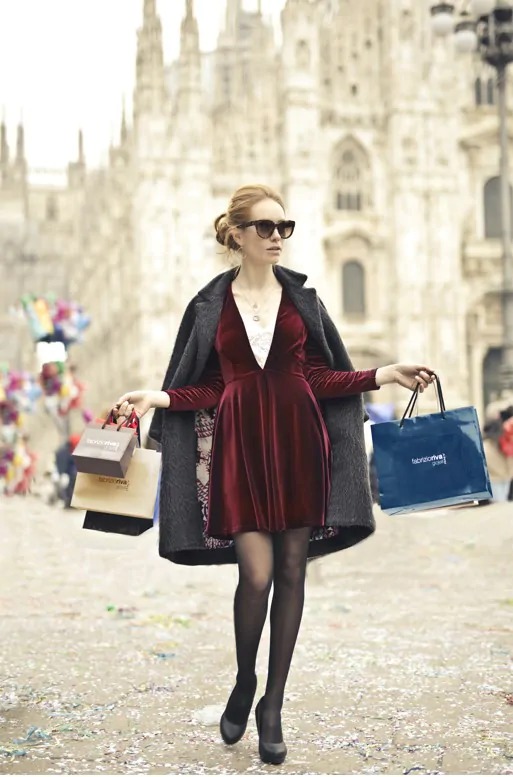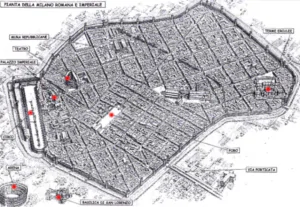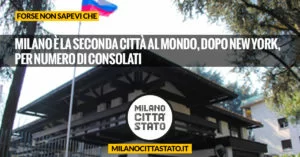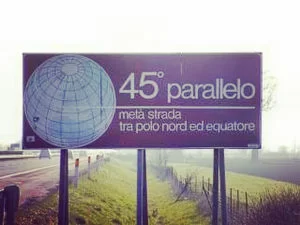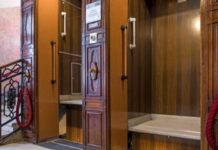Talking about tourism in Milan you may encounter different opinions, from those who have always seen it as a city not suitable to represent the Italian beauties, to those who, considering the huge growth Milan had over the years, have understood and finally have admitted for some time now, That Milan is also great from tourist attractions point of view, whether visitors are Italian or foreigners. However, there are, some things that are still unknown to most people (and often even to the citizens of Milano themselves) that are worth listing.
What the TOURISTS DON’T KNOW ABOUT MILAN
# 1 Water is Free

We are not referring here to the public water fountains, but to the municipal natural and sparkling water dispensers, which saw the light on the occasion of Expo 2015 and which were then set, like urban totems, around the city. These modern fountains have been named “Water’s House”, and in Milan there are 47 of them.
You can choose between half a litre, a litre or a litre and a half: in a day you can take up to 6 liters of water for each citizen and in order to be able to get the water out you just need to insert in the dispenser the regional (or national) services card (the health card).
# 2 the kindness of Milan

Difficult to accept, but outside Milan it is still difficult to believe that the hostility and closure of the foggy Milan during the ’60s and ’70s is over.
As a matter of fact, the city has been living for decades an international melting pot, a fluid succession of cultures and events of various types and 360-degree initiatives to improve the wellness of citizens, tourists or visitors. And all this is done with a sense of welcome and openness that in other urban centers, does not exist.
# 3 It was the capital of the Roman Empire
Few people only may remember that Milan was the capital of the Western Roman Empire from 286 to 402 AD. It happened with the arrival of Diocletian who created for Mediolanum the opportunity to become a city of remarkable splendor. Born in Dalmatia (a region now divided between Croatia and Montenegro) he became emperor in 284 AD. Diocletian restructured the provinces of the Empire bringing them together in dioceses submitted to vicars.
Italy was divided from the north to the Arno, so called “Annonary Italy” and, in the south, in “Suburbicarian Italy”. In Milan as well as in other strategically important cities a tax was collected to finance the armies and the court that no longer set only in Rome. As the capital of the Eastern Roman Empire the Romans chose instead Constantinople, which was known among the Greeks as Byzantium. It became the “today’s Istanbul”.
# 4 Excellent food and even cheap
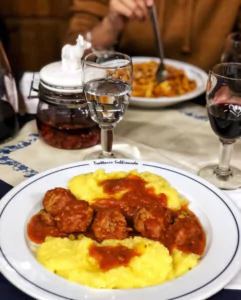
Trattoria milano
Yes, you got it right. Forget about bourgeois menus, special evenings for VIP customers such as show girls and/ or football players and famous and expensive restaurants like “Giannino”, “Tano Passami l’Olio”, and so on.
Milan is plenty of restaurants applying more than a reasonable price, something recalling the bistro in Rome where behind the counter there is a plump old lady with crude manners but nice looking.
Here it is the same thing, with the difference that the small restaurants, so to say more modest, are less known than the ones in Rome or Napoli and, of course, that the annoying customers get the reactions in the local dialect.
# 5 It’s the city with the highest number of consulates in the world
The definition of Milan as the most international city in Italy, which has origin as of Expo 2015, only partially weakened by the defeat because of the European battle for the Ema, is confirmed thanks to another specific record.
As a matter of facts and thanks to the Expo 2015, Milan has surpassed New York City among the cities that are not capitals for the number of consular diplomatic representations. Currently there are 122, according to the data of the Dean of the Consular Corp of Milan and Lombardy, the general consul of Uruguay, Ricardo Duarte. Half of our consuls are “career” consuls, while about 60 are honorary consuls.
# 6 The water flows under the streets
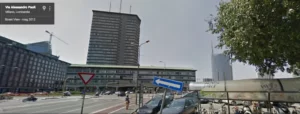
Who could really imagine what is hiding behind the crossing between Melchiorre Gioia Street and Monte Grappa Street? If you pay attention when you are close to the gardens – those in front of the old “Cucine Economiche” – you will hear the water flowing.
Looking closely at the garden you will notice the presence of many metal structures, a kind of large manhole drains under which, semi-hidden, the Martesana Canal flows peacefully, which changes its name to Redefossi at this point, converging later in the Seveso.
# 7 Milan has his own original Statue of Liberty
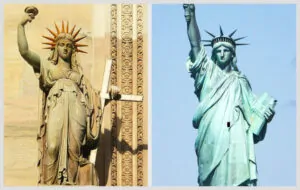
statua libertà milano
Everyone knows the famous symbol of New York and North America, but perhaps not many know that on the facade of the Cathedral is carved a statue of the Lady Liberty and that it also represents the original version.
The statue is on the left side of the balcony and more precisely above the central door of the Cathedral. It dates back to 1810 and was made by Camillo Pacetti who gave it the name of “The New Law”. Dimensions apart, the similarities between the Statue of Liberty in Milan and the one oversea are really a lot and, for this reason, many people believe that Frederic Auguste Bartholdi was inspired by “The New Law”, created by Pacetti in the Napoleonic era, for the construction of the Statue of Liberty that we can all admire today in the Big Apple.
#8 It is a mix of all the great cultures of the continental Europe
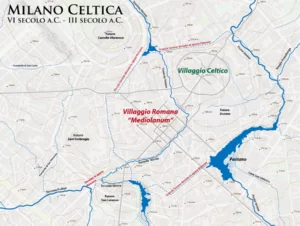
Founded by the Celts in 590 BC, Milan was touched by all the dominations present from the Celtic, Roman and contemporary era, passing through the medieval and modern era. After being the most important city of the Insubrian Celts, the ancient Mediolanum was conquered by the Romans in 222 B.C. after a harsh siege by the consuls Cornelio Scipione and Marco Claudio Marcello.
The conquest was thwarted by Hannibal’s arrival, who created an alliance with the Celtic population. It was only in the first years of the second century B.C. that the Insubri and the Boi finally submitted to the Roman domination. During the period of the Empire of Rome, thanks to its favorable rearguard position, Milan was of strategic importance for the campaigns of Caesar during the conquest of Gaul.
Over the centuries Milan saw its economy growing exponentially: in the thirteenth century Milan was one of the few European cities to have more than 100,000 inhabitants. The craftmanship was growing fast, especially for the metals and textiles working, agriculture and breeding were flourishing and the trade were intensifying, thanks to the construction of the “Naviglio Grande” that facilitated the trade exchanges and largely watered the countryside. After being part of the Holy Roman German Empire, in Milan there has been the Spanish and Austrian period.
In the modern era it has been cradle of the settlement of Napoleon Bonaparte in the north of the peninsula. From 1796 to 1797 Milan was the capital of the Transpadana Republic, from 1797 to 1802 the seat of government of the Cisalpine Republic, from 1802 to 1805 the capital of the Italian and Napoleonic Republic and from 1805 to 1814 seat of government of the Reign of Italy of Napoleon and then return to Austrian hands.
# 9 It’s the only city in Europe that won the Champions League with two different teams
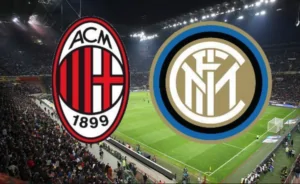
milan e inter
Only the great football fans know that Milan has a unique record in football. It is the only city to have won the Champions League with two different teams. Then there is another curiosity even less known: how many teams are in Milan?
Wrong! Inter and Milan are famous all over the world, but in Milan there is a small but significant team born in the artistic part of the city. The Brera Football Club, founded by journalist Alessandro Aleotti in 2000, it plays its games at the historic Milan Civic Arena and is famous for its social initiatives.
# 10 It’s halfway between the North Pole and the Equator
We want to close this article with a tip, a geographical curiosity, with an approximation of about fifty kilometers. Milan is located just above the 45th parallel which is exactly halfway between the North Pole and the equator. To be precise, you have to take the Milano Genova highway and exit near Voghera (district of Pavia) where in fact you can come across a sign that marks the point of passage of the 45th parallel.
LAURA MALTAGLIATI
(Original article by Carlo Chiodo)


